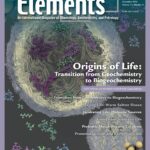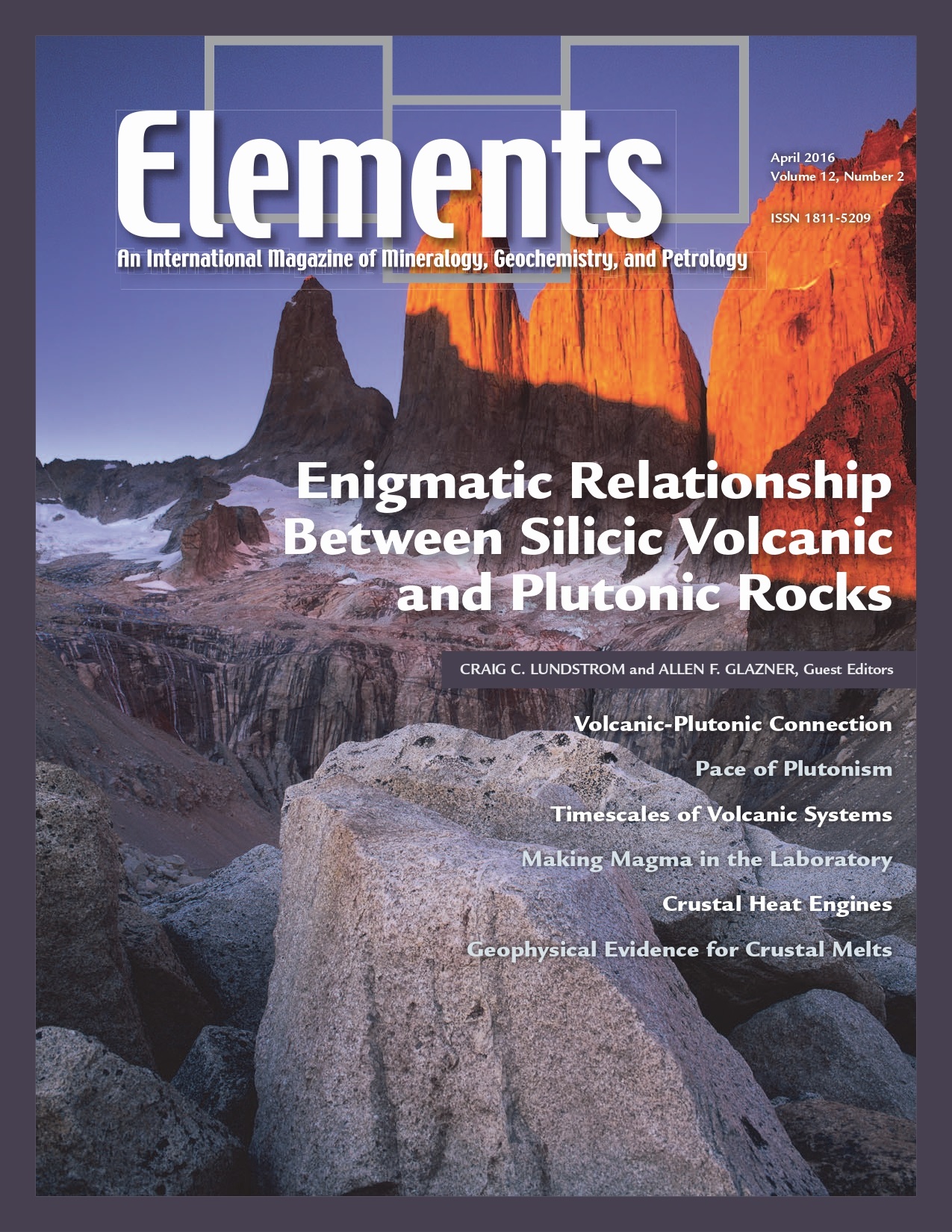
Geomicrobiology And Microbial Geochemistry, December 2015, Vol. 11, No. 6
June 28, 2024
Origins Of Life: Transition From Geochemistry To Biogeochemistry, December 2016, Vol. 12, No. 6
June 28, 2024Enigmatic Relationship Between Silicic Volcanic And Plutonic Rocks, April 2016, Vol. 12, No. 2
$20.00
The relationship between silicic volcanic and plutonic rocks has long puzzled geologists. Although the compositional evolution for volcanic and plutonic rock suites are virtually identical, there is much debate whether rhyolites form as melt extracted from granite plutons or whether the two rock types reflect wholly separate origins.
Enigmatic Relationship Between Silicic Volcanic And Plutonic Rocks
April 2016, Vol. 12, No. 2
The relationship between silicic volcanic and plutonic rocks has long puzzled geologists. Although the compositional evolution for volcanic and plutonic rock suites are virtually identical, there is much debate whether rhyolites form as melt extracted from granite plutons or whether the two rock types reflect wholly separate origins. This issue discusses the broad set of observations from petrology, geochronology, thermal modeling, geophysical techniques, and geochemistry that lead to contradictory interpretations and no simple description for the relationship. Discerning how silicic volcanic and plutonic rocks are connected will affect important Earth science questions such as “how is continental crust formed?” and “can we predict supereruptions?”
Why You’ll Love Elements Magazine:
- Expert Contributors: Articles written by renowned researchers in the field of geoscience.
- Engaging Content: Join a community of readers who are passionate about Elements.
- Exceptional Quality: Each issue is printed on high-quality paper with stunning visuals and detailed illustrations that bring complex scientific concepts to life.
Order your copy of the April 2016 issue of Elements magazine today and delve into the enigmatic relationship between silicic volcanic and plutonic rocks.
Related products
-
Frontiers In Textural And Microgeochemical Analysis, August 2007, Vol. 3, No. 4
$20.00Recent advances have been made in high-resolution in situ methods to image mineral growth patterns, analyse compositional and isotopic zonation, and improve our ability to visualize, study, and model rock textures in three dimensions. These advances provide a significant step forward in the understanding of how rocks form and the history they can tell us.
-
Diamonds, March 2005, Vol. 1, No. 2
$20.00Diamond, the fascinating ultrahard mineral, is the focus of considerable interest and scientific research. Recent advances particularly relevant to geoscientists include: diamond as a recorder of Earth processes from the perspective of inclusions, chemistry, and conditions of formation; synthesis for research applications and processing to modify color and physical properties, important to diamond gems and anvils; the implications of nanodiamonds from meteorites.
-
Platinum-Group Elements, August 2008, Vol. 4, No. 4
$20.00The geoscientific and economic significance of the PGE is immense. Due to their extreme siderophile and chalcophile behaviour, the PGE are highly sensitive tracers of geological processes involving metal and sulfide phases.




